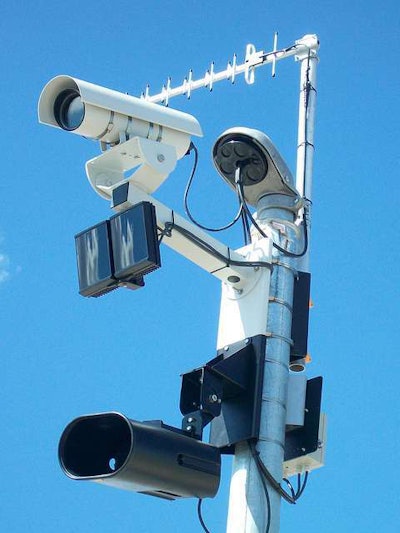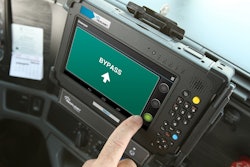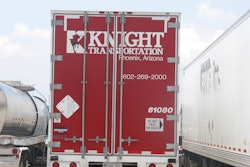 As part of the setup process for DriveWyze’s preclearance program, states establish the automated criteria they use to determine whether to inspect a vehicle or issue a green light for bypass.
As part of the setup process for DriveWyze’s preclearance program, states establish the automated criteria they use to determine whether to inspect a vehicle or issue a green light for bypass.In July, the Federal Motor Carrier Safety Administration began allowing states to use wireless mobile data devices – such as smartphones, tablets and onboard computers – to serve as transponders in electronic truck inspection and weigh station bypass systems. States can use the “new” transponders to identify commercial vehicles as they approach inspection points.
One way the technology works is to install an app on a mobile device; the GPS-enabled app triggers a message that automatically identifies the motor carrier in the screening software system used by enforcement officers.
With a cloud-based screening system, the inspection officer could use any device with a Web browser to look at the carrier’s safety credentials and decide whether to issue a green or red light.
Drivewyze’s service already is active in 16 states, with agreements in place with four more. “Our goal is to bring a new state online every month,” says Brian Mofford, vice president of technology.
An important distinction must be made between electronic screening and electronic bypass. With electronic screening, an inspection station would use the signal from a mobile device to identify the motor carrier and look at its safety credentials in FMCSA’s SAFER database.
A signal from a PrePass transponder identifies that the carrier belongs to its electronic bypass preclearance program. Help Inc. continuously monitors the safety credentials of carriers using FMCSA’s SAFER database and an additional 60 sources, many of which come from states that do not upload their truck inspection data to SAFER.
Drivewyze also is a preclearance program. As part of the setup process, states establish the automated criteria they use to determine whether to inspect a vehicle or issue a green light for bypass.
PrePass has been the standard for electronic bypass systems with 31 states and more than 450,000 vehicles using Help Inc.’s technology. PrePass transponders emit an identification signal through dedicated short-range communication (DSRC).
Prior to FMCSA’s July announcement, only DSRC-enabled transponders satisfied the agency’s requirement for electronic inspection systems if states were to receive federal funding. That’s because DSRC was the only technology available at the time of FMCSA’s earlier mandate.
While PrePass has had the capability to use mobile data devices as transponders for “quite some time,” states and motor carriers also have had concerns about the accuracy, reliability and privacy of data sent from mobile devices, says Karen Rasmussen, chief executive officer of Help Inc.
The signal from a DSRC transponder can be used only by law enforcement for inspection purposes and is virtually foolproof. PrePass transponders also double for weigh-in-motion scales and toll collection systems such as EZ-Pass. “You know that the signal you are reading is from that of a truck,” Rasmussen says.
Drivewyze’s mobile app does not contain any information that identifies the carrier; that data is stored on the company’s back-end servers. The app only sends a unique security token to the servers, an approach that ensures the data transmitted is secure and fast, Mofford says.
Drivers can turn off the Drivewyze app while in a personal vehicle, and if the app is installed on an in-cab system from PeopleNet or Zonar, the app always stays with the truck.
FMCSA says mobile data devices will accelerate the adoption of electronic bypass systems that now are used by 39 states. With the new technology, state agencies can set up inspection sites anywhere through geofencing by creating a virtual perimeter around a geographic area – eliminating the need to use fixed sites only.
FMCSA’s announcement is another example of how developments in mobile technology and cloud computing continue to help fleets and government agencies operate more efficiently.











